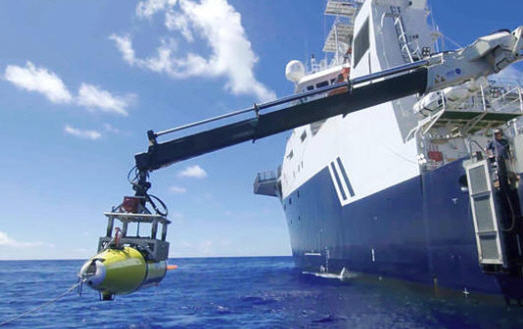
“Washington called. My head of Underwater Archaeology, Bob Neyland, boarded R/V PETREL after I disembarked. PETREL then went out and found HORNET on the first dive, so no drama for Bob.
CBS broke the story on HORNET first, even though she had been found after WASP.
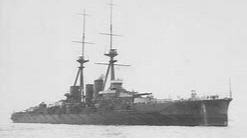
(IJN Heie. Photo USN via IJN)
PETREL would then go on to locate and positively identify the Japanese battleship HIEI, which had been unable to steer after the “Achilles Heel” hit by SAN FRANCISCO. Hit over 85 times during the night battle, the stubborn ship finally succumbed the next day to multiple waves of air attacks from ENTERPRISE, and from Henderson Field, whose airplanes had been saved by the sacrifice of Callaghan’s force, preventing a Japanese bombardment, at staggering cost.
I have been asked on occasion why we- the Navy- would want publicity about shipwrecks. Don’t sunken ships represent defeat? Actually, in the case of the U.S. Navy, most ship losses were in the course of victory, and victory has a price. Many of those ships lost in defeat were lost in acts of unbelievable courage in the face of overwhelming odds.
Even in the worst of defeats, there are almost always numerous extraordinary acts of valor and sacrifice by American Sailors that deserve to be remembered.
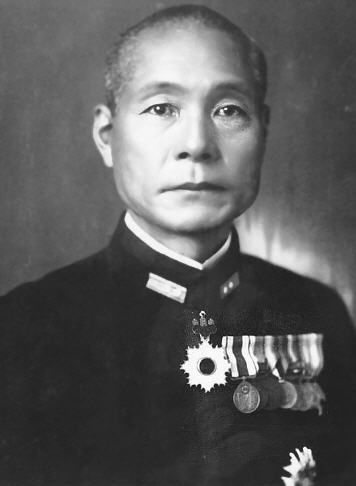
Even Vice Admiral Gunichi Mikawa, who inflicted the worst at-sea defeat of the U.S. Navy in the Battle of Savo Island, lauded the courage displayed by the northern group of U.S. cruisers, especially USS QUINCY (CA-39,) before all three were sunk. Mikawa commented that with five minutes more warning for the U.S., the outcome of what should have been an evenly-matched battle might have been completely different.
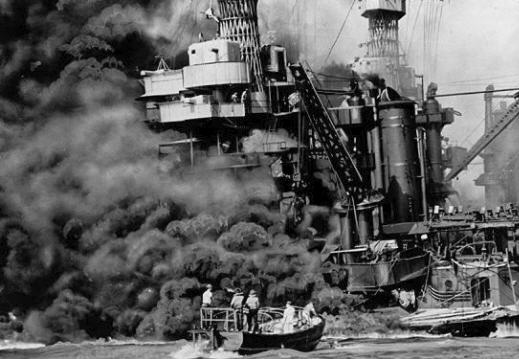
Even at Pearl Harbor, the Japanese were astonished at how quickly U.S. ships were able to put up an intense anti-aircraft barrage; it was the weapons that were ineffective, not the U.S. Sailors who manned them. And at Pearl Harbor, those officers and sailors earned 15 Medals of Honor and 51 Navy Crosses for acts of extreme valor in the face of catastrophe. Such courage deserves to be remembered.
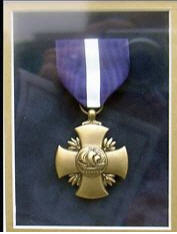
From the very beginning, American sailors have paid a very high price for the freedom of this nation. The Battle of Penobscot Bay (a defeat,) BONHOMME RICHARD (John Paul Jones) vs. HMS SERAPIS, and RANDOLPH (Nicholas Biddle) vs. HMS YARMOUTH, were all in the top eight bloodiest battles of the American Revolution on land or sea, with over 300 killed in each. Their sacrifice deserves to be remembered.
Sadly, memorials dedicated to the sacrifice of American Sailors during the Battles for Guadalcanal are few and far between. Besides the SAN FRANCISCO memorial, the USS SOUTH DAKOTA memorial in Sioux Falls honors the three destroyers lost in the battle of 14-15 November (PRESTON, WALKE and BENHAM,) and the museum ship THE SULLIVANS (DD-573) in Buffalo has a room dedicated to the JUNEAU, aboard which all five Sullivan Brothers were lost after the battle of 13 November.
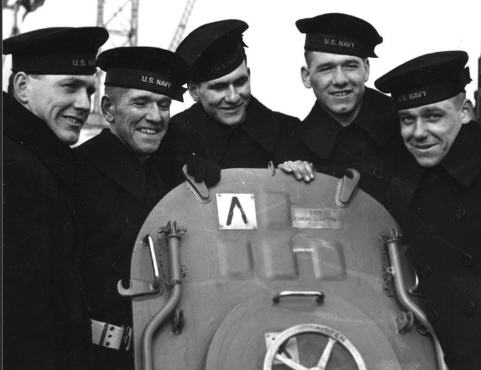
The Sailors who fought at Guadalcanal were still mostly pre-draft volunteer professionals, many of whom had endured years of austere budgets, slow promotions, neglect and even disrespect.
They went to war in a Navy with equipment that was not the best in the world, even though we thought so, and yet they still did their duty to the utmost, even in some cases against insurmountable odds and the knowledge that they would not survive. They bought time with their lives for this nation to mobilize the industry and manpower to achieve ultimate victory, for which this nation should always be grateful.
To have the story of the HORNET and WASP, ships whose courageous crews held the line during the darkest days of the war, reach a wide national and international audience is in my view a “win” for the U.S. Navy.
There are still ships to be found, such as the destroyer USS JARVIS (DD-393,) her loss on 9 August 1942 with all 233-hands somewhere southwest of Guadalcanal overshadowed by the disaster at Savo Island the night prior.
Badly damaged by a Japanese aerial torpedo and saved by the heroic damage control efforts of her crew, JARVIS was limping alone toward Australia for repair when she came under a 31-plane Japanese air attack.
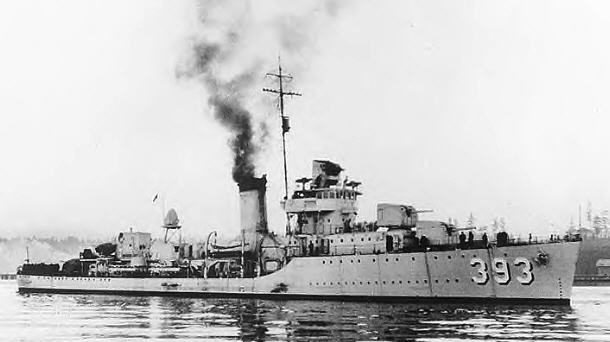
It is known from Japanese records that the crew of JARVIS put up a valiant fight, downing several aircraft before being overwhelmed. For Lieutenant Commander William W. Graham, Jr. (USNA ’25) and the crew of JARVIS, there are no Medals of Honor, no Navy Crosses, no Presidential Unit Citation, because there were no witnesses.
Only the ship herself, wherever she may be, serves as a memorial to the crew’s valor and ultimate sacrifice. That wreck, and every other Navy wreck, is hallowed ground deserving of the utmost respect, and the lives of their crews deserve to be remembered.”
– RDML Sam Cox, USN-Ret. is Director of the Navy History and Heritage Command
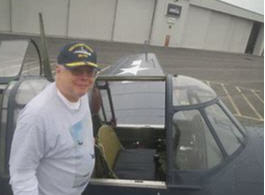
Additional details on the battles around Guadalcanal can be found in H-grams 009, 010, 011, 012, 013, 015 at https://www.history.navy.mil/about-us/leadership/director/directors-corner/h-grams.html
(Sources include; Guadalcanal: The Definitive Account of the Landmark Battle” by Richard B. Frank (Random House NY:1990); “History of U.S. Naval Operations in World War Two, Vol. V. The Struggle for Guadalcanal” by RADM Samuel Eliot Morison (Little, Brown and Co. Boston: 1949); “Neptune’s Inferno: The U.S. Navy at Guadalcanal” by James D. Hornfischer (Bantam Book: 2011); Naval History and Heritage Command, Dictionary of American Fighting Ships (DANFS) for individual ship histories, and Combinedfleet.com for Japanese ship histories.)
Copyright 2019 Sam Cox
www.vicsocotra.com
Vic Socotra
Mon, Apr 8, 9:26 AM (20 hours ago)
to nipmail@yahoogroups.com, me
pete speer Mon, Apr 8, 12:48 PM (17 hours ago)
to NIPmail@yahoogroups.com, pete, me, Vic
Vic, You hit my sad sweet spot. The work being done by Sam Cox I liken to that done by the first Christians — after the after Rome had finally been converted and it was physically safe and morally imperative for those born or and surviving or lately converted to spread not just the gospel, not just re-reading the Letters of Peter and Paul. The opening of the catacombs was an act of love, even though below there was no air. It was an act of Love, of conjoining, of sharing by the telling of the true beliefs. And in so doing to continue that common bond that gave meaning to eternity.
That is, by the way, probably why an Admiral from another navy could remark and at what he saw and understand.
There are no tombstones, no corpsmen at oars pulling to save the wounded and the waiting. The lost DD exacted a cruel price — a level which every sailor knew would be paid in death. In 1942 the Navy was still our our national religion. That was why the Yamamoto designed attack could not and would not succeed. The best he could plead for was somehow a stalemate, cutting American influence at the IDL and permitting the IJN to defeat with little opposition the weakness in the European Colonies in Asia.
Most Navy recruits were of young men living our history and never having seen either great Ocean, but living with the history the Navy’s role in the Revolution and each later conflict. Pearl Harbor was an abomination which had to be righted. By contrast the MacArthur parade of B-17 delivered to Clark Air Force Base in the Philippines to be destroyed by the Japanese air raids in short order was small beer.
The Navy was our religion. It is no longer. It can be again. In fact, it must be — a fully integrated force designed to take care of business. Vic, and you all, a religion. Right now it is four echelons, Air, Submarine, Surface and DOD Duty. It would be better if we were the Jesuits of the Sea. A Career does not not make a dream.
Vic, please pass this on if you deem appropriate. And bless you, sir for following what could turn out to be the miracle which will conjoin the the four echelons above. Limited war and police actions can not bring it back. The belief of our sailors, the willingness to sacrifice fully. A giant choir of fighting men is needed to carry the day
pete speer.
From: NIPmail@yahoogroups.com on behalf of Vic Socotra jayare303@gmail.com [NIPmail]
Sent: Monday, April 8, 2019 10:25 AM
To: Renee L; nipmail@yahoogroups.com
Subject: [NIPmail] Re: No Tombstones at Sea: Naval History and Heritage
On Mon, Apr 8, 2019 at 10:20 AM wrote:
08 April 2019
No Tombstones at Sea: Naval Heritage and History
Screen Shot 2019-04-08 at 10.04.26 AM.png
“Washington called. My head of Underwater Archaeology, Bob Neyland, boarded R/V PETREL after I disembarked. PETREL then went out and found HORNET on the first dive, so no drama for Bob.
CBS broke the story on HORNET first, even though she had been found after WASP.
Screen Shot 2019-04-08 at 9.44.10 AM.png
(IJN Heie. Photo USN via IJN)
PETREL would then go on to locate and positively identify the Japanese battleship HIEI, which had been unable to steer after the “Achilles Heel” hit by SAN FRANCISCO. Hit over 85 times during the night battle, the stubborn ship finally succumbed the next day to multiple waves of air attacks from ENTERPRISE, and from Henderson Field, whose airplanes had been saved by the sacrifice of Callaghan’s force, preventing a Japanese bombardment, at staggering cost.
I have been asked on occasion why we- the Navy- would want publicity about shipwrecks. Don’t sunken ships represent defeat? Actually, in the case of the U.S. Navy, most ship losses were in the course of victory, and victory has a price. Many of those ships lost in defeat were lost in acts of unbelievable courage in the face of overwhelming odds.
Even in the worst of defeats, there are almost always numerous extraordinary acts of valor and sacrifice by American Sailors that deserve to be remembered.
Screen Shot 2019-04-08 at 9.48.02 AM.png
Even Vice Admiral Gunichi Mikawa, who inflicted the worst at-sea defeat of the U.S. Navy in the Battle of Savo Island, lauded the courage displayed by the northern group of U.S. cruisers, especially USS QUINCY (CA-39,) before all three were sunk. Mikawa commented that with five minutes more warning for the U.S., the outcome of what should have been an evenly-matched battle might have been completely different.
Screen Shot 2019-04-08 at 9.50.34 AM.png
Even at Pearl Harbor, the Japanese were astonished at how quickly U.S. ships were able to put up an intense anti-aircraft barrage; it was the weapons that were ineffective, not the U..S. Sailors who manned them. And at Pearl Harbor, those officers and sailors earned 15 Medals of Honor and 51 Navy Crosses for acts of extreme valor in the face of catastrophe. Such courage deserves to be remembered.
Screen Shot 2019-04-08 at 9.54.49 AM.png
From the very beginning, American sailors have paid a very high price for the freedom of this nation. The Battle of Penobscot Bay (a defeat,) BONHOMME RICHARD (John Paul Jones) vs. HMS SERAPIS, and RANDOLPH (Nicholas Biddle) vs. HMS YARMOUTH, were all in the top eight bloodiest battles of the American Revolution on land or sea, with over 300 killed in each. Their sacrifice deserves to be remembered.
Sadly, memorials dedicated to the sacrifice of American Sailors during the Battles for Guadalcanal are few and far between. Besides the SAN FRANCISCO memorial, the USS SOUTH DAKOTA memorial in Sioux Falls honors the three destroyers lost in the battle of 14-15 November (PRESTON, WALKE and BENHAM,) and the museum ship THE SULLIVANS (DD-573) in Buffalo has a room dedicated to the JUNEAU, aboard which all five Sullivan Brothers were lost after the battle of 13 November.
Screen Shot 2019-04-08 at 9.57.02 AM.png
The Sailors who fought at Guadalcanal were still mostly pre-draft volunteer professionals, many of whom had endured years of austere budgets, slow promotions, neglect and even disrespect.
They went to war in a Navy with equipment that was not the best in the world, even though we thought so, and yet they still did their duty to the utmost, even in some cases against insurmountable odds and the knowledge that they would not survive. They bought time with their lives for this nation to mobilize the industry and manpower to achieve ultimate victory, for which this nation should always be grateful.
To have the story of the HORNET and WASP, ships whose courageous crews held the line during the darkest days of the war, reach a wide national and international audience is in my view a “win” for the U.S. Navy.
There are still ships to be found, such as the destroyer USS JARVIS (DD-393,) her loss on 9 August 1942 with all 233-hands somewhere southwest of Guadalcanal overshadowed by the disaster at Savo Island the night prior.
Badly damaged by a Japanese aerial torpedo and saved by the heroic damage control efforts of her crew, JARVIS was limping alone toward Australia for repair when she came under a 31-plane Japanese air attack.
Screen Shot 2019-04-08 at 10.05.14 AM.png
It is known from Japanese records that the crew of JARVIS put up a valiant fight, downing several aircraft before being overwhelmed. For Lieutenant Commander William W. Graham, Jr. (USNA ’25) and the crew of JARVIS, there are no Medals of Honor, no Navy Crosses, no Presidential Unit Citation, because there were no witnesses.
Only the ship herself, wherever she may be, serves as a memorial to the crew’s valor and ultimate sacrifice. That wreck, and every other Navy wreck, is hallowed ground deserving of the utmost respect, and the lives of their crews deserve to be remembered.”
– RDML Sam Cox, USN-Ret. is Director of the Navy History and Heritage Command
Screen Shot 2019-04-08 at 10.12.51 AM.png
Additional details on the battles around Guadalcanal can be found in H-grams 009, 010, 011, 012, 013, 015 at https://www..history.navy.mil/about-us/leadership/director/directors-corner/h-grams.html
(Sources include; Guadalcanal: The Definitive Account of the Landmark Battle” by Richard B. Frank (Random House NY:1990); “History of U.S. Naval Operations in World War Two, Vol.. V. The Struggle for Guadalcanal” by RADM Samuel Eliot Morison (Little, Brown and Co. Boston: 1949); “Neptune’s Inferno: The U.S. Navy at Guadalcanal” by James D. Hornfischer (Bantam Book: 2011); Naval History and Heritage Command, Dictionary of American Fighting Ships (DANFS) for individual ship histories, and Combinedfleet.com for Japanese ship histories.)
Copyright 2019 Sam Cox
www.vicsocotra.com
